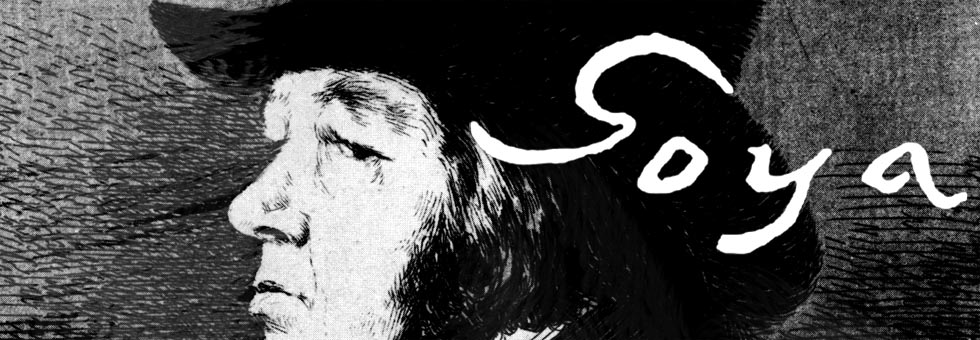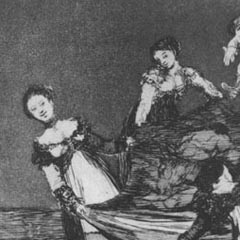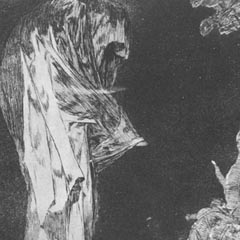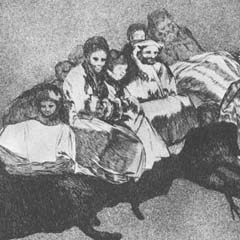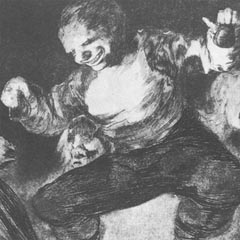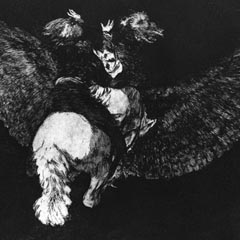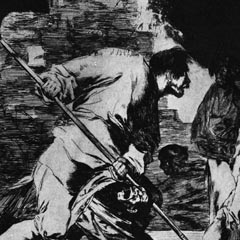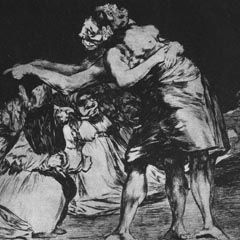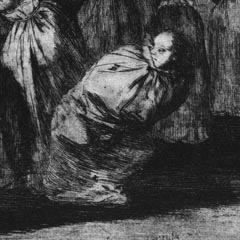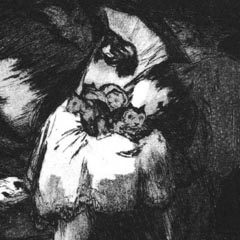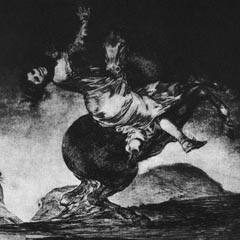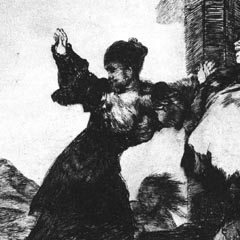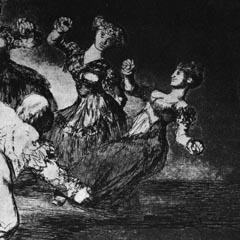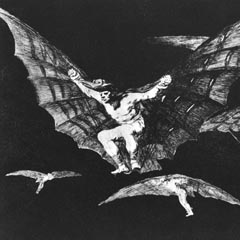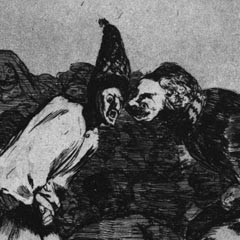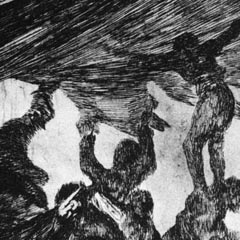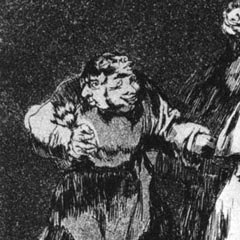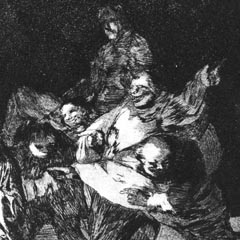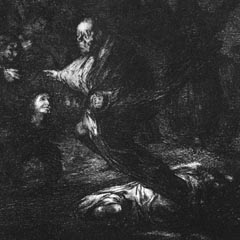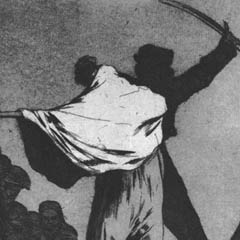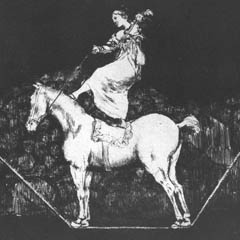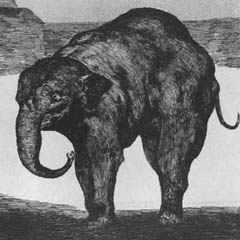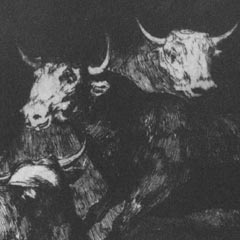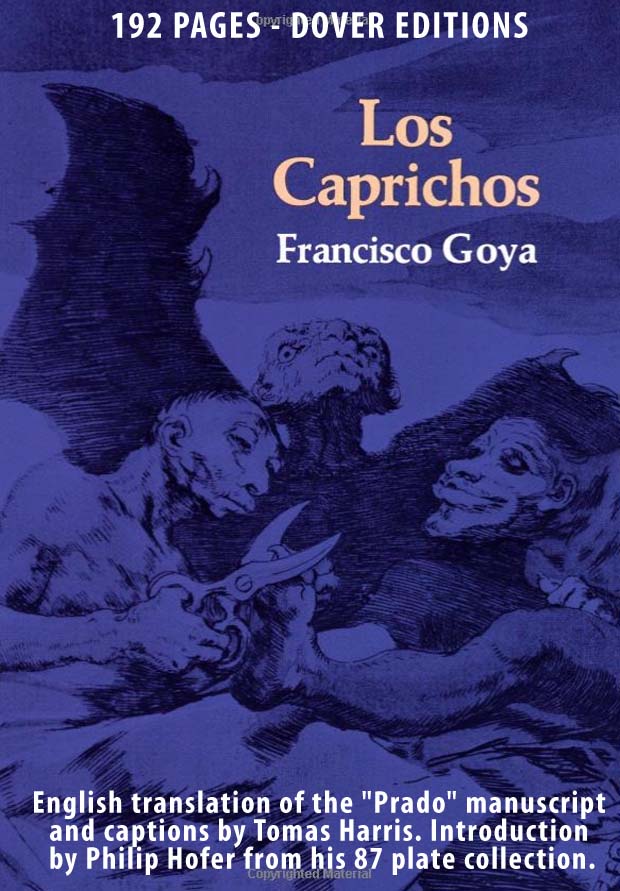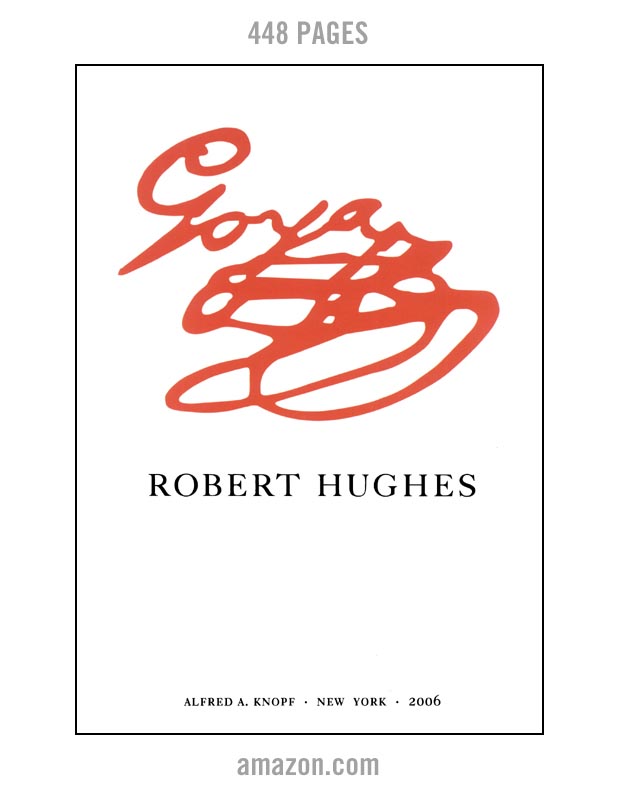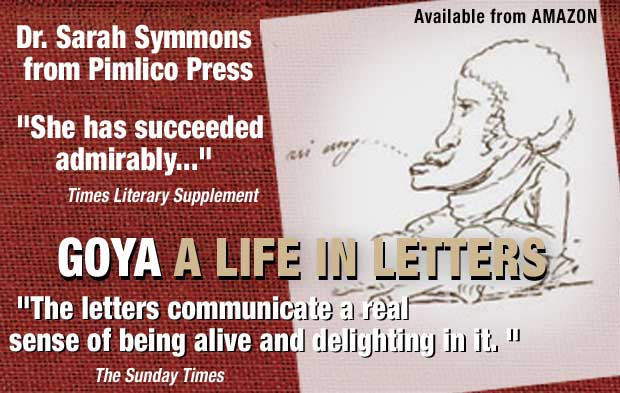Goya - Disparates (Proverbios)
"They have been variously called the Sueños ("Dreams") and Proverbios ("Proverbs") as well as the Disparates ("Follies"). Dreams is too vague and proverbs, the name under which they were posthumously published by the Royal Academy of San Fernando in Madrid in 1864, simply inapplicable: no Spanish folk sayings that correspond to Goya's disturbing and idiosyncratic images have been unearthed. Disparate was Goya's own word for them. "
Robert Hughes, Goya, page 366,
Alfred Knopf, November 2003
"In the case of Goya [on the subject of "puzzle pictures"] we realize that any rational interpretation of his image is bound to remain superficial and unsatisfactory. His true theme, presented in its germinal form in the Caprichos and expanded later in the mature Black Paintings and the Disparetes, is the inadequacy of man's intellectual and sensory apparatus for gaining knowledge of himself and of his world."
Fred Licht from Goya, page 149, Abbeville Publishing Group 2001
Like the series Disasters of War, the Disparates were not published in Goya's lifetime, though work proofs were made for Goya to check the images.
The Royal Academy of San Fernando acquired plate 13 Modo de volar ("One Way of Flying") as an aquatint etching that was printed in 1864. This is when the title los Proverbios was first applied to the series.
Available collections:
Goya y Dali: del Capricho Al Disparate (Spanish Edition) - Amazon
Goya Caprichos and Desastres (Spanish) - Amazon
The Disparates
Plate 7
Matrimonial Extravagance
Plate 10
Young woman on a bucking horse
Plate 12
Three men and women dancing
Plate 18
Old Man Wandering Among Phantoms
AMAZON
Goya The Terrible Sublime - Graphic Novel - (Spanish Edition) - Amazon
"From this headlong seizure of life we should not expect a calm and refined art, nor a reflective one. Yet Goya was more than a Nietzschean egoist riding roughshod over the world to assert his supermanhood. He was receptive to all shades of feeling, and it was his extreme sensitivity as well as his muscular temerity that actuated his assaults on the outrageous society of Spain." From Thomas Craven's essay on Goya from MEN OF ART (1931).
"...Loneliness has its limits, for Goya was not a prophet but a painter. If he had not been a painter his attitude to life would have found expression only in preaching or suicide." From Andre Malroux's essay in SATURN: AN ESSAY ON GOYA (1957).
"Goya is always a great artist, often a frightening one...light and shade play upon atrocious horrors." From Charles Baudelaire's essay on Goya from CURIOSITES ESTRANGERS (1842).
"[An] extraordinary mingling of hatred and compassion, despair and sardonic humour, realism and fantasy." From the foreword by Aldous Huxley to THE COMPLETE ETCHINGS OF GOYA (1962).
"His analysis in paint, chalk and ink of mass disaster and human frailty pointed to someone obsessed with the chaos of existence..." From the book on Goya by Sarah Symmons (1998).
"I cannot forgive you for admiring Goya...I find nothing in the least pleasing about his paintings or his etchings..." From a letter to (spanish) Duchess Colonna from the French writer Prosper Merimee (1869).
GOYA : Los Caprichos - Dover Edition - Amazon
